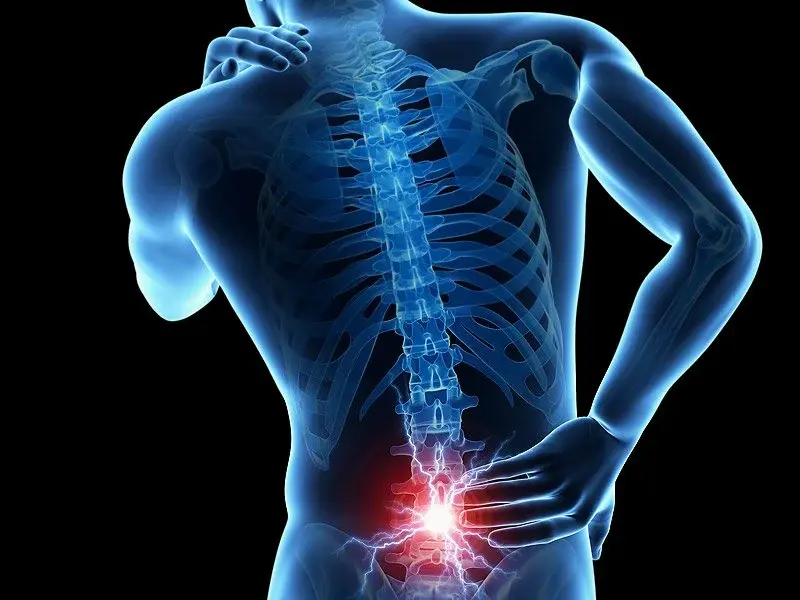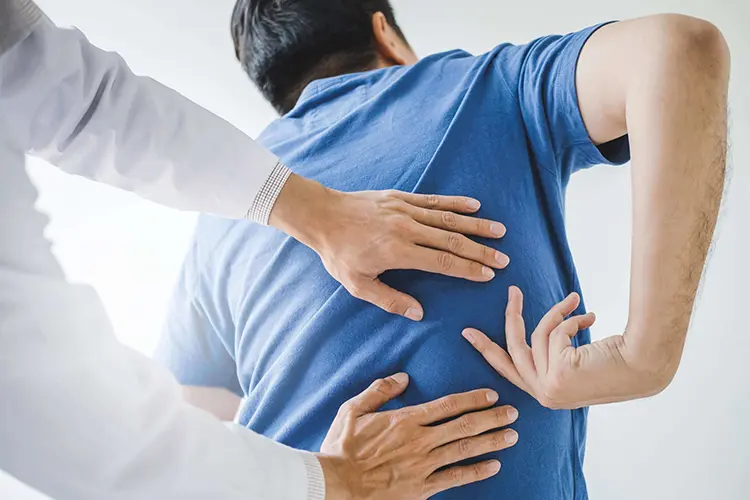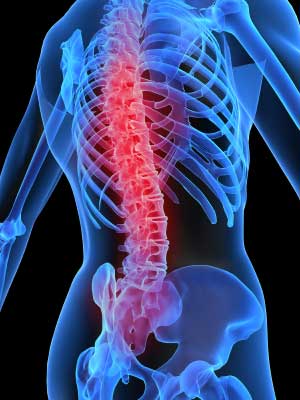Car accidents, even at low speeds, can generate significant force that impacts your body. One of the most common, and most serious, types of injuries sustained in a car wreck is a back injury. Despite advanced safety features in today’s vehicles, back injuries remain common due to the complex and delicate nature of the spine. While modern technology has reduced fatality rates, non-fatal injuries like back trauma have become more prevalent.
Why Back Injuries Happen in Car Accidents
Your spine is an intricate system made up of 24 vertebrae, 23 discs, dozens of muscles and ligaments, and a network of nerves that carry signals throughout your body. This highly coordinated structure supports your weight, allows movement, and enables communication between your brain and limbs. But during a car accident, even a seemingly minor one, this delicate system is subjected to unnatural forces.
Sudden Impact Disrupts Spinal Alignment
During a accident, your body experiences a rapid change in speed and direction. Sudden deceleration, direct impact, or being jolted in multiple directions can cause the spine to twist, compress, or stretch beyond its normal limits. These rapid movements place tremendous stress on the vertebrae, spinal discs, muscles, and nerves, leading to injuries that range from mild sprains to severe spinal damage.
Different Accident Types Cause Different Back Injuries
- Rear-End Collisions often result in whiplash, a condition that affects not just the neck but also the upper and lower spine due to the whip-like motion of the body.
- Side-Impact or T-Bone Accidents may cause rotational forces that twist the torso, potentially leading to disc herniation, muscle tearing, or joint misalignment.
- Rollover Accidents expose the spine to multiple angles of force, increasing the risk of spinal fractures or dislocations.
Each crash scenario introduces different types of stress on the spine, which is why back injury symptoms vary so widely.
Seat Belts Save Lives—But Can Also Contribute to Spinal Strain
While seat belts are important for reducing life-threatening injuries, they work by restraining your torso. Meanwhile, your head and limbs continue moving with the momentum of the vehicle. This uneven restraint creates torque along the spine, especially in the cervical (neck) and thoracic (mid-back) regions, resulting in sprains, strains, and disc injuries.
The Head’s Weight Amplifies the Risk of Neck and Upper Back Injuries
Your head weighs about 10 to 12 pounds. In a crash, that weight multiplies due to inertia, putting tremendous force on the cervical spine when your head snaps forward or backward. This motion can injure discs, ligaments, and nerve roots, sometimes without any immediate symptoms.
Common Symptoms of a Back Injury After a Car Wreck
Back injuries from auto accidents can present a wide range of symptoms. It’s important to remember that not all symptoms show up immediately. In fact, adrenaline can mask pain for hours or even days, delaying the onset of noticeable pain or discomfort.
You might feel fine immediately after the crash but begin to experience stiffness, soreness, or radiating pain days later. That’s why prompt medical attention is crucial after any accident, regardless of how you feel in the moment.
Here are the most common symptoms to watch for:
- Radiating Pain in the Legs or Arms: This often indicates nerve involvement, such as sciatica or cervical radiculopathy. The pain may shoot down your limbs and become more intense with movement.
- Muscle Spasms or Fatigue: Your back muscles may react to trauma by tightening involuntarily. Spasm can range from mild twitches to painful contractions that restrict mobility.
- Numbness or Tingling (“Pins and Needles): These sensations usually signal nerve compression or damage, often caused by a herniated or bulging disc pressing on nearby nerve roots.
- Stiffness or Reduced Mobility: Difficulty bending, twisting, or standing upright could indicate muscle strain, ligament sprains, or more serious spinal injuries.
- Localized or Widespread Back Pain: Pain may be centered in the lower back (lumbar), mid-back (thoracic), or upper back and neck (cervical). It can feel dull and aching or sharp and stabbing, depending on the type of injury.
Why You Shouldn’t Ignore These Symptoms
Even if your symptoms seem mild, ignoring them could result in long-term complications such as chronic pain, reduced mobility, or permanent nerve damage. Early diagnosis and treatment can significantly improve your recovery outcomes.
If you’ve been involved in a car accident, even a minor one, don’t wait. Schedule a medical evaluation immediately. A accident physician can identify hidden injuries before they become serious.
Types of Back Injuries from Auto Accidents

Bulging Disc
A bulging disc occurs when the cushion between your vertebrae shifts out of place. This condition may press against nearby nerves, leading to pain, numbness, or weakness. Bulging discs are common in rear-end collisions due to the abrupt jerking motion of the spine.
Herniated Disc
If a bulging disc ruptures and leaks its inner fluid, it becomes a herniated disc. This type of injury can cause intense pain, especially if the fluid compresses nerve roots. Treatment ranges from physical therapy and medication to surgery in severe cases.
Pinched Nerve
When a disc presses against a nerve, it disrupts the signal between your brain and the affected body part. This can lead to sensations of “pins and needles,” burning, or even partial paralysis. If the pressure is relieved quickly, the nerve may heal. However, prolonged compression can result in permanent damage.
Soft Tissue Injuries
Muscles, tendons, and ligaments in your back can stretch or tear due to the force of impact. These are known as soft tissue injuries and include sprains and strains. Symptoms may not appear immediately but often include soreness, stiffness, and inflammation.
Spinal Fractures
The vertebrae in your spine can fracture under extreme force. Types of spinal fractures include:
- Compression Fracture: When the front of the vertebra collapses
- Burst Fracture: More severe, with the vertebra breaking in multiple places
- Flexion Fracture: Often occurs from being bent too far forward
- Dislocation Fracture: Vertebrae shift out of alignment, often requiring surgery
Spinal fractures are serious and require immediate medical attention.
Diagnosing a Back Injury After a Car Accident
If you’re experiencing back pain following an auto accident, it’s important to get a proper diagnosis as soon as possible. What feels like a simple ache could be a sign of a more serious issue such as a herniated disc, nerve compression, or even a spinal fracture. Doctors use several diagnostic tools to assess the type and severity of your injury.
📸 X-Rays
What they show:
X-rays are typically the first imaging test ordered after a car accident. They provide a clear view of the bones in your spine and can detect fractures, dislocations, or signs of spinal misalignment.
Why it matters:
While X-rays don’t show soft tissue injuries, they’re excellent for identifying broken bones and structural damage that may require immediate care.
🧲 MRI (Magnetic Resonance Imaging)
What it shows:
An MRI uses powerful magnets and radio waves to produce detailed images of your spinal discs, nerves, ligaments, and soft tissues.
Why it matters:
MRIs are essential for diagnosing conditions like herniated or bulging discs, pinched nerves, spinal cord compression, and torn ligaments—injuries that often don’t show up on X-rays.
🖥️ CT Scan (Computed Tomography)
What it shows:
A CT scan creates cross-sectional images of your spine using X-ray technology. It provides more detail than standard X-rays and can help detect small fractures or subtle abnormalities in the bone and disc structure.
Why it matters:
CT scans are especially useful when more clarity is needed after an inconclusive X-ray, or when looking for complex bone injuries.
⚡ EMG (Electromyography)
What it tests:
EMG testing measures how well your muscles and nerves are working together. It evaluates the electrical activity in your muscles and can detect nerve dysfunction or damage.
Why it matters:
If you’re experiencing numbness, tingling, or radiating pain, an EMG can help pinpoint whether your symptoms are due to a pinched or damaged nerve, and how severe the impairment is.
Treatment Options for Car Accident Back Injuries

Chiropractic Care
Chiropractors specialize in treating musculoskeletal injuries, including those caused by car accidents. They use spinal adjustments, soft tissue therapy, and rehabilitation exercises to alleviate pain and restore mobility.
Physical Therapy
Physical therapists create personalized plans to help you recover strength and flexibility. These plans may include stretching, core strengthening, and posture training.
Pain Management
If conservative treatments aren’t enough, pain management specialists may offer:
- Epidural injections
- Nerve blocks
- Prescription medications
These options provide temporary relief while you continue other forms of treatment.
Neurological Care
A neurologist specializes in diagnosing and treating nerve-related conditions. They can determine whether your symptoms are due to nerve damage and may order tests like EMGs to assess the extent of injury.
Surgical Intervention
Surgery may be needed for severe cases such as herniated discs, spinal fractures, or nerve compression that doesn’t improve with conservative care. Common procedures include spinal fusion and disc removal.
Preexisting Back Conditions and Car Accidents
Many people live with mild or moderate back issues long before a car accident happens. These may include chronic lower back pain, previous herniated discs, degenerative disk disease, or old spinal injuries from past accidents or physical strain. Unfortunately, these pre-existing conditions can be worsened, or reactivated, by the force of a car crash.
How Car Accidents Aggravate Preexisting Injuries
Even a low-speed collision can put significant stress on your spine, potentially turning a manageable condition into a serious problem. For example:
- A previously healed herniated disc may re-rupture.
- Chronic lower back pain can become severe and disabling.
- Degenerative changes in the spine may accelerate.
- Scar tissue from an old injury can become inflamed again.
Dealing with Insurance and Preexisting Conditions

Insurance companies often try to downplay injury claims by arguing that your pain is due to a “preexisting condition” rather than the accident. However, if a car accident worsened or reactivated your condition, you still have the right to medical care—and you may still be eligible for compensation under personal injury law.
This is why documentation is key. A medical evaluation immediately after the accident, along with a comparison to your previous medical records, can clearly show the difference in your condition before and after the wreck.
Legal and Medical Support Can Help
Doctors who specialize in auto accident injuries understand how to differentiate between old and new back injuries. They can provide detailed records, imaging comparisons, and expert opinions that support your case. Personal injury attorneys can also help argue the medical necessity of treatment caused or worsened by the accident.
Why Quick Medical Care Matters with a back injury
Even if you feel fine after a collision, see a doctor. Early diagnosis and documentation are important for your recovery. Delaying treatment could lead to worsening symptoms or difficulty proving the injury was caused by the accident.
Accident Doctor connects injury victims with trusted doctors who specialize in auto accident-related back injuries. Whether you need chiropractic care, physical therapy, or a spine specialist, we can help you find the right provider near you.
Don’t ignore back pain after a car accident. Get evaluated and start treatment today to avoid long-term damage.





 Since 2012, Accident Doctor has been dedicated to connecting personal injury patients and attorneys with qualified physicians who specialize in treating accident-related injuries. Our nationwide network includes experienced medical professionals who provide care for individuals involved in car accidents, motorcycle accidents, truck and tractor-trailer collisions, slip and fall incidents, and workers’ compensation cases.
Since 2012, Accident Doctor has been dedicated to connecting personal injury patients and attorneys with qualified physicians who specialize in treating accident-related injuries. Our nationwide network includes experienced medical professionals who provide care for individuals involved in car accidents, motorcycle accidents, truck and tractor-trailer collisions, slip and fall incidents, and workers’ compensation cases.